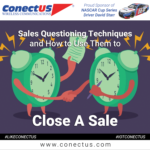In sales, it can get quite stressful when it comes down to talking to other people about your products or services. The simple fact is, if you don’t make any sales, you don’t make any money. As what’s pretty obvious, this can have a huge impact on your financial and personal standing.
You want to generate as many sales as possible but not only that, you want to insure we’ve provided a tremendous value to your customer. Your products and/or services are great; you promote and many endorse them. You speak to your target market of buy ready consumers to persuade them to purchase. Unfortunately, rejection may be a very common response from your strong efforts and you are frustrated.
What can you do to maximize our efforts with every interaction, every sales endeavor, that will bring your chances of achieving the sale, up to the highest level possible?
To do so, it is important to understand “desire” and the extremely huge significance it holds. Deep down inside each and every one of us we have “desire”. Whether it’s for this need or that interest, we each have a different desire for whatever subject or topic is at hand. You may not care about a particular desire, but to someone else it can be of large importance.
Let’s first understand desire a little bit better before we jump into getting exponentially more sales. Desire is defined as to wish or long for; crave or want. Desire tends to be, in fact, a driving force in each and every human being. It causes us to make decisions that can impact something little or of epic proportions. Thus, our desires, no matter what they are, clearly impact all “buying” decisions.
When you present your offer, product or service there are successful ways to do so to better understand and relate to the buyer’s desire.
First of all, take your time. What I mean by that is don’t rush through the sale and pound them with all these things your product or service can do. This will confuse and potentially frustrate your customer. You must take things slowly and converse with your customer and you must make sure they are comfortable in the moment. An uncomfortable, frustrated, or even confused customer will not be fully receptive to your offer and in most situations, deny the sale. When they are in any of these states, they will feel that their desires are unimportant and that you’re just interested in making the sale (making money) and not in genuinely helping them. Once you reach a point where the customer is comfortable and knows that you are really listening, then you can start to push forward at a faster rate. Until then, you must take it slow and take your time.
Another thing you want to steer clear of is repeated objections. Objections are part of every single sales process whether it’s big or small. Your customers will always have objections, but if they have too many of them, it is a clear sign that you are not listening deeply enough. You must ask more deep probing questions. Ask questions that are relevant and that create a conversation. Your goal is to uncover the desires behind all the objections they are giving you – you must understand your customer’s desires in order to get the sale.
There are two questions you must ask yourself: “What can my product/service help them do?” and “What are the real and actual benefits to that particular customer?”
What can my product or service help them do is much different than what can my product or service do. Your customer wants to always know how something can help them. Will it help them do this task or that task? Can it help them manage their frustration, get more things done during the day, give them security and piece of mind, allow them to have more freedom and time to spend with their family, give their kids a better chance of getting into college, etc. You can talk on and on all day about what your product or service does, but if your customer doesn’t see the connection with what it can help them with, something that they “desire”, essentially something that will give them the opportunity to experience more of their desire; you’re virtually guaranteed to lose the sale. You must show how it helps, not just what it can do.
This leads us to the second question, “What are the real benefits?” Your customer wants to know what’s in it for them. Features are simply features. The difference between features and benefits is that features are descriptive facts and benefits are what the customer will actually gain as result of having those features. Features do not sell anything – benefits do!
For example, a computer is just a computer. You could talk about how the processor is huge, there’s a large hard drive, a great graphics card, storage capacity, etc. Yes, they need to know these facts, but that is not what will cause them to buy. The buying decision only takes place when they understand how all those features will actually be of benefit to them. In this example, you must discuss the benefits that will truly capture their interest and target their desire. The features may include the computer being top of the line, high performance, fast and efficient, etc. But the benefits allow the customer to do more of the things they love faster and easier. They will surf the internet at lightning fast speeds, watch movies in pure HD quality without the need for an expensive home entertainment system, and if they are a business owner, create and export and share documents quickly and easily so that their sales team can spend more time with customers, make more sales and make more money.
Customers do not purchase features. They buy benefits! Benefits specifically targeted to that customer’s wants, needs and desires.
Are you interested in selling Verizon Wireless services? Call us at (855) SELL-VZW or fill out the form below. We look forward to talking to you soon!
[ccf_form id=”948″]



